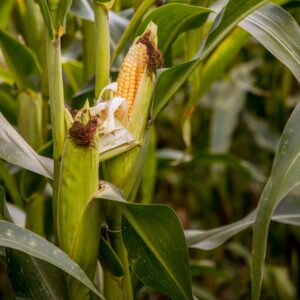
Photo by Shelley Pauls on Unsplash
Source: Dry Beans Producer Organisation; A Profile of the South African Dry Bean Market Value Chain (see "Websites & publications" heading).
Major producers of dry beans include China, USA, Brazil, India, Argentina, Mexico and Myanmar.
The landed costs of imported beans, determined largely by the then current exchange rate of the Rand in relation to the US Dollar, have a definite influence on the local price structure. The prices obtained for locally produced beans are also influenced by the quality of the beans on offer (locally produced versus the imported product). A strengthening of the Rand in relation to the US Dollar also encourages higher volumes of imports.

That South Africa relies on imports is offered as a reason for farmers located in suitable production areas to enter the market.
Dry beans are grown in Limpopo (28.9%), Free State (28.5%), North West (16.2%) and Mpumalanga (14.4%) (DALRRD, 2023). The dry bean production areas in South Africa as follows:
Province | Area |
| Free State | Bethlehem (including the Aberfeldy/Afrikaskop area), Fouriesburg, Ficksburg, Clocolan, Harrismith, Kroonstad, Henneman |
| KwaZulu-Natal | Kokstad, Vryheid, Bergville/Winterton, Greytown, Weenen, Mooi River |
| Limpopo | Thabazimbi, Koedoeskop, Marble Hall, Tuinplaas, Vaalwater, Ohrigstad, Mashishing (Lydenburg), Burgersfort |
| Mpumulanga/Gauteng | Middelburg, Nigel (including the Bloekomspruit/ Grootvlei area), Delmas (including the Sundra, Eloff, Waaikraal, Kendal area), Ermelo (including the Chrissiesmeer,/Lothair area). |
| North West | Brits, Lichtenburg, Koster, Rysmierbult |
| Northern Cape | Kimberley, Douglas, Modderrivier |
Bean producers have the choice to sell directly to the trade or supply their product to the first point of sale in the bean marketing chain such as wholesalers and co-operatives. Beans can be sold to packers or processors and if they are unbranded they are sold in the informal market through spaza shops and hawkers. If they are branded they get to the formal market through the chain stores e.g. Pick ‘n Pay, Hyperama, Woolworths and Checkers/Shoprite. Split beans can also be exported to niche markets in the form of flour, and the bread and pasta industry make use of it.
Source: Dry Beans Producer Organisation; A Profile of the South African Dry Bean Market Value Chain (see "Websites & publications").
Dry beans work well in a crop rotation system with maize on suitable soils. The recommendation is one year of dry beans out of three to four years in a crop rotation system. In a dry bean crop rotation system the long-term yield of maize has been increased by as much as 1 ton/ha. On high-yield soils the introduction of a dry bean/maize crop rotation system could drastically improve the profitability of both the dry bean and maize crops.
Find details of two publications, Dry Bean Production and Dry Bean Production and Disease Manual under “Websites & publications“. These cover the technical information required for growing dry beans.
Dry beans play an important role in the production systems of many small-scale farmers in South Africa The major part of beans produced by small-scale farmers is used for home consumption and/or traded at local markets. Despite limitations hampering the production of dry beans in this sector, the indications are that this sector can make a substantial contribution to dry bean production in South Africa. Support to small-scale producers is currently provided by the ARC-Grain Crops (ARC-GC), and its main partner, the Dry Bean Producers Organisation (DPO).
Dry Bean Producers’ Organisation (DPO) – https://droebone.com The DPO provides industry-related services (like supplying production and marketing information) to the bean producer. It manages the research done, and is responsible for product and market development.
ARC-Grain Crops (GC) – www.arc.agric.za Training and research is done.
Zamukele (Schoeman Group) – www.schoemangroup.co.za/zamukele A project which established new dry bean farmers as commercial farmers
Further reference:
Training
Research
Companies
Available from the Dry Bean Producers Organisation (DPO) are publications like: (i) A number of free information brochures in connection with the health benefits of dry beans as well as a new recipe book entitled Bean Renaissance – the intelligent food choice (also available in Afrikaans) (ii) SA Dröebone Drybeans magazine (iii) Root Diseases of Dry Beans and the Dry Bean Production and Disease Manual. The latter comprehensive publication is available from the DPO and the ARC-GC .
Publications are available from the Department of Agriculture, Land Reform and Rural Development (DALRRD) website, www.dalrrd.gov.za: (i) Find the latest annual A Profile of the South African Dry Bean Market Value Chain on the Directorate Marketing web pages. (ii) Two production guides are the Info Pak Dry Bean Production (information supplied by the ARC-GC), and Dry beans production. Find production brochures here for other pulse crops too like Cowpeas, Chick peas etc.
CD Roms from the ARC-PHP (Plant Health and Protection) include: (i) Crop Pests, Vol. 4: Field Crops and Pastures Pastures (ii) Medically Important Spiders And Scorpions Of Southern Africa. Write to booksales [at] arc.agric.za or infopri [at] arc.agric.za.
Consult the AgriSETA Learner Guide Primary Agriculture “Harvesting agricultural crops”.
With regard to quality control an important documents is the Regulations related to the Grading, Packaging and Marking of Dry Beans destined for sale in the Republic of South Africa as published in Government Gazette No. 23571 on 5 July 2002, and its amendment.
Watch the National Agricultural Marketing Council (NAMC) presentation (2015) on the launch of the “Dry bean development scheme”, a collaboration with the Limpopo Department of Agriculture (LDA), Kopano Co-operative, Tiger Brands Foods and Northern Seed Producers. Visit www.youtube.com/watch?v=_G_rJv6l8MU.
Some articles: